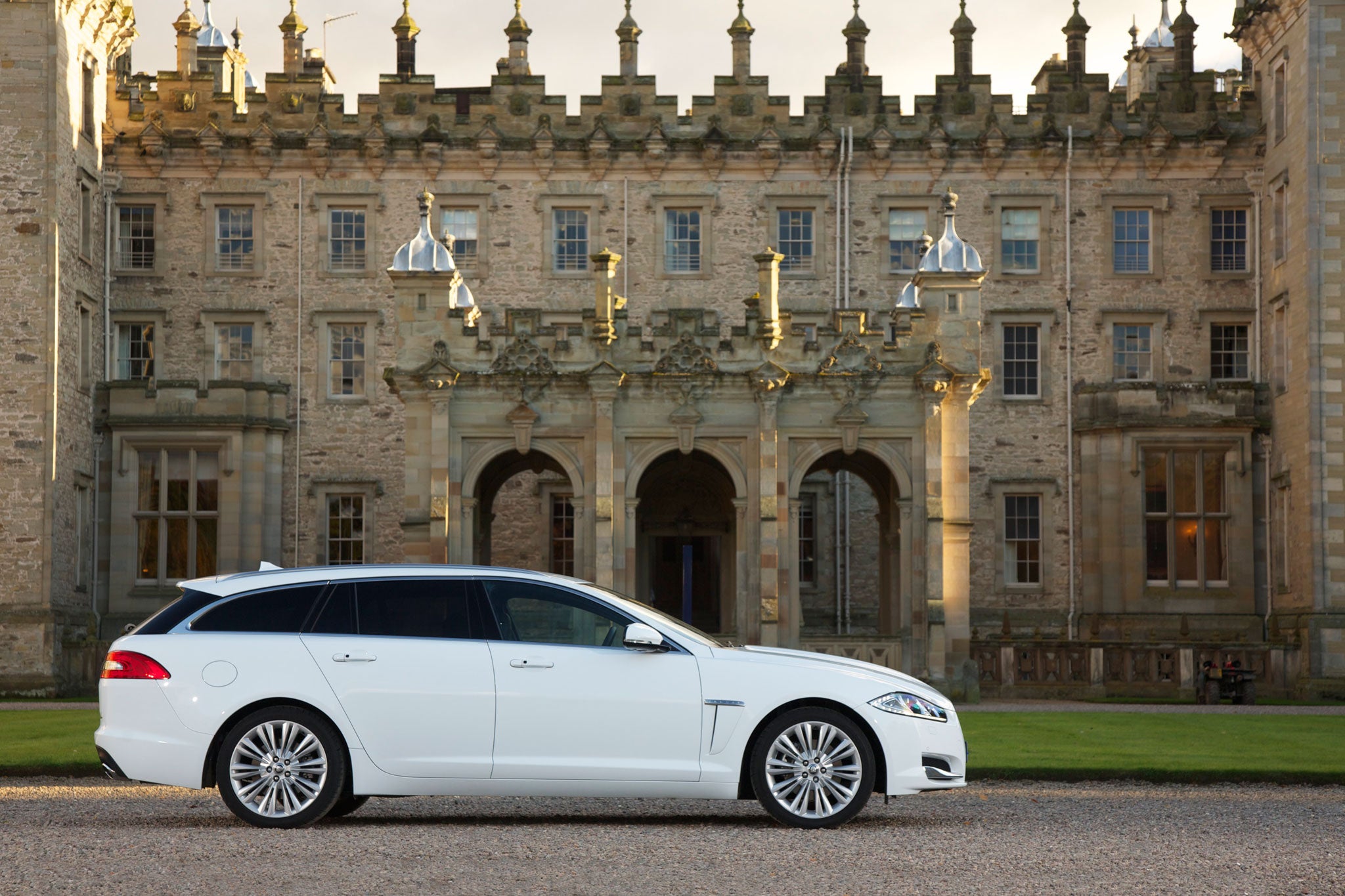Motoring review: Jaguar XF Sportbrake Portfolio 3.0 DS
No matter how big the load, Jaguar's new estate will tow it in style.

Your support helps us to tell the story
From reproductive rights to climate change to Big Tech, The Independent is on the ground when the story is developing. Whether it's investigating the financials of Elon Musk's pro-Trump PAC or producing our latest documentary, 'The A Word', which shines a light on the American women fighting for reproductive rights, we know how important it is to parse out the facts from the messaging.
At such a critical moment in US history, we need reporters on the ground. Your donation allows us to keep sending journalists to speak to both sides of the story.
The Independent is trusted by Americans across the entire political spectrum. And unlike many other quality news outlets, we choose not to lock Americans out of our reporting and analysis with paywalls. We believe quality journalism should be available to everyone, paid for by those who can afford it.
Your support makes all the difference.Price: £51,505 (range starts at £31,940)
Engine: 2,993cc, V6 cylinders, 24 valves, twin-sequential-turbo diesel, 275bhp
Transmission: Eight-speed automatic gearbox, rear-wheel drive
Performance: 155mph, 0-60 in 6.1 seconds, 46.3mpg, CO2 163g/km
The obvious question to ask when gazing upon the Jaguar XF Sportbrake's sleek form is: why did it take so long? The saloon-shaped XF was launched five years ago, but unlike its German rivals (BMW 5-series, Mercedes-Benz E-class and Audi A6), it could not be had in an estate version. That has now changed, because between 2008 and now, Jaguar has gained a more adventurous owner in the Tata group, investment has poured in and the sibling marques of Jaguar and Land Rover have never had it so good.
So, here at last is the Sportbrake. Looking racier and more rakish than any of its rivals mentioned above, it is offered with nothing but diesel engines – and very fine diesel engines they are, their basic design shared with units used in Land Rovers, Fords, Peugeots and Citroëns but installed and tuned in a specifically Jaguar way.
There are two 2.2-litre, four-cylinder turbodiesels of 163 or 200bhp, both astonishingly smooth and quiet, and a pair of 3.0-litre V6s with either 240 or an S-specification 275bhp. It's this final unit, with a monstrous 443lb ft of pulling power, which powers the range-topping Sportbrake Portfolio that I have been driving. Estate cars such as this are often used for towing, and such an engine could hardly be better suited to the task.
The XF Sportbrake is a fine example, possibly the best so far, of how to make a Jaguar look properly modern yet still recognisably a handsome Jaguar. The front half is the same as an XF saloon's, but the silver-outlined sequence of side windows gives an airy, delicate look. The tailgate is topped by an overhanging aerodynamic spoiler, while a silver bar traverses the tailgate's lower half and cuts right through the rear lights.
That tailgate opens to reveal a large, flat-floored load bay, which you can quickly make larger by pulling levers to flip the rear seats' backrests forward and down. The boot floor contains dividers to create corrals which stop luggage from sliding around. In short, the Sportbrake functions as an entirely practical estate.
The engine is magnificent, with a deep six-cylinder growl and almost no trace of a diesel's usual gruffness. It pulls through all eight of its automatically selected gears with muscular assertion (or you can shift manually via a pair of paddles), with the only flaw being that if you move too briskly from rest, the take-off can be more violent than intended.
As with most higher-spec XFs, this car has adaptive damping, with an operating range that can be made firmer via a Sport mode which also makes the gear changes snappier. The difference between the modes is subtle, though, and you'll rarely venture out of the standard one, which combines a fabulously calm, quiet ride with taut, precise and confident handling. I have long thought that Jaguar combines comfort and driving enjoyment better than any of its rivals.
Its interior is the most interesting, too, and gives the greatest sense of occasion with its bold use of textured aluminium, its wood trim in unexpected places, its dashboard vents with covers that automatically close in formation when not in use, and its rotary gear selector, which rises out of the centre console, submarine-like, on start-up.
With the possible exception of the much more expensive Mercedes CLS Shooting Brake, no other large estate car is as appealing to gaze upon, to be in or to drive. With prices starting at £31,940, it seems close to irresistible.
Join our commenting forum
Join thought-provoking conversations, follow other Independent readers and see their replies
Comments